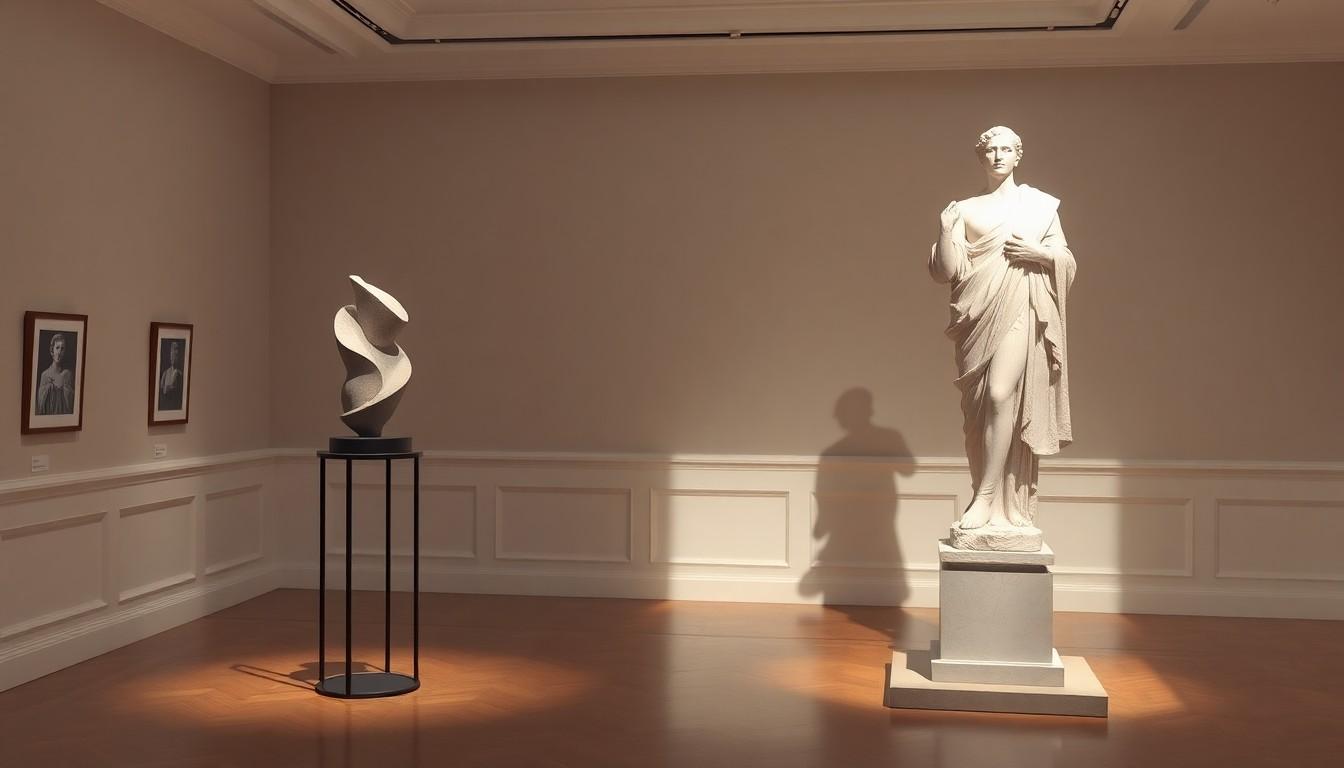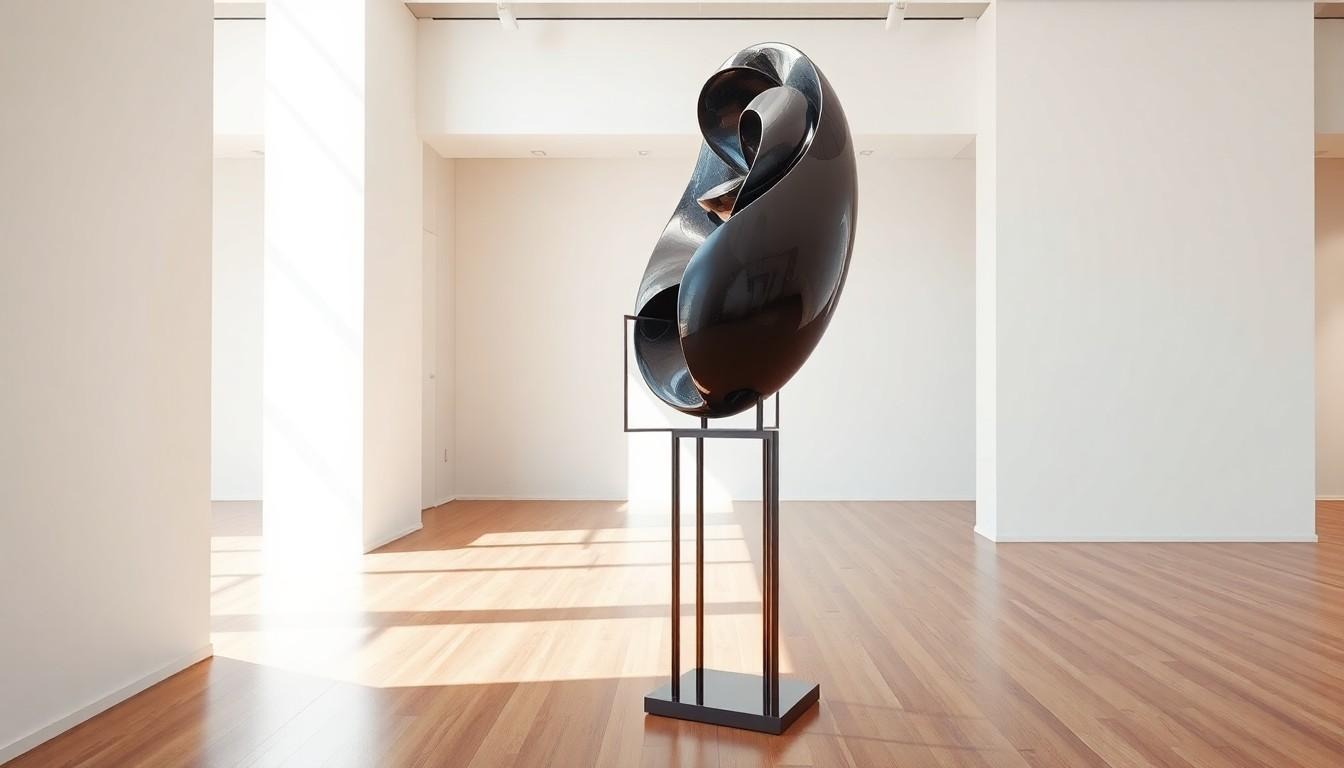In the world of art, a sculpture stand isn’t just a piece of furniture; it’s the unsung hero that elevates masterpieces to new heights—literally! Imagine a stunning sculpture perched precariously on the edge of a coffee table. Yikes! That’s a recipe for disaster, and nobody wants a tragic art accident. A well-chosen sculpture stand not only showcases the artwork but also adds a touch of elegance to any space.
Sculpture Stand
A sculpture stand supports and elevates sculptures for display. These stands come in various designs, sizes, and materials, offering artists and collectors flexibility in presentation. Choosing the right sculpture stand enhances visibility while complementing the artwork’s style.
Materials for sculpture stands vary widely. Common options include metal, wood, and acrylic. They provide different aesthetic qualities, allowing for customization based on the sculpture’s characteristics. For example, sleek metal stands may suit contemporary pieces, while wooden stands may enhance natural or classical sculptures.
Dimensions of stands also affect display. Taller stands draw attention to larger sculptures, providing a commanding view. Shorter stands are ideal for smaller pieces, encouraging intimate interaction. Some stands may even feature adjustable heights for versatility, accommodating various sculptures.
Functionality is another crucial aspect. While many stands focus on aesthetics, they must prioritize stability and safety. A well-designed stand prevents tipping or damage to the sculpture. Certain stands also offer features like built-in lighting, enhancing visibility and artistic impact.
In addition to practicality, sculpture stands play a significant role in the overall presentation of artwork. Thoughtfully chosen stands can turn a simple sculpture into a focal point in any space. They frame the piece, guiding the viewer’s gaze and enhancing the narrative of the artwork.
Sculpture stands reflect the artist’s vision and the collector’s style, making them indispensable in art display practices. By investing in the right stand, one ensures the artwork receives the attention it deserves, demonstrating care for both the piece and the environment in which it resides.
Types of Sculpture Stands
Sculpture stands come in various types, each serving unique functions and aesthetic purposes. Two common options include adjustable stands and fixed height stands.
Adjustable Sculpture Stands
Adjustable sculpture stands offer flexibility in height, accommodating diverse sculptures. They allow artists or collectors to modify the display according to the specific piece and its surroundings. Find adjustable stands ideal for exhibitions where variable visibility is essential. Often constructed from sturdy materials like metal or wood, they ensure stability while maintaining versatility. Some models even feature locking mechanisms, guaranteeing safety during display changes. Artists appreciate the ability to create dynamic presentations without sacrificing security.
Fixed Height Sculpture Stands
Fixed height sculpture stands provide a stable, consistent display option for specific works. Designed to showcase sculptures at a predetermined height, these stands emphasize form and detail. Collectors often choose them for showcasing pieces that demand a particular perspective. Crafted from materials like acrylic or solid wood, fixed stands enhance the sculpture’s visual impact. These stands eliminate concerns about adjustment, providing reliability for long-term displays. Choosing a fixed height stand can simplify the presentation process while maintaining a polished aesthetic.
Factors to Consider When Choosing a Sculpture Stand
When selecting a sculpture stand, several key factors influence the decision-making process. These elements affect not only the display but also the longevity and safety of the artwork.
Material and Durability
Choosing the right material enhances both aesthetic appeal and stability. Metal stands offer robust support, often featuring powder-coated finishes for resistance to wear and tear. Wood stands provide a classic look but vary in durability based on the type of wood used. Acrylic stands deliver a modern, sleek appearance while remaining lightweight. Durability must be assessed, as higher quality materials resist bending or breaking over time. For outdoors or public spaces, selecting weather-resistant materials increases longevity.
Size and Stability
Size significantly impacts how the sculpture appears in a given space. Selecting the right height promotes engagement, with taller stands showcasing larger pieces effectively. Stability is achieved through solid construction and weight distribution. Wider bases prevent tipping, especially in high-traffic areas. Proper sizing ensures the sculpture remains the focus while enhancing safety. Many stands also incorporate adjustable features, catering to various artwork dimensions. Balancing size with stability creates a secure setting perfect for art appreciation.
Benefits of Using a Sculpture Stand
A sculpture stand enhances the display and appreciation of artwork. Increased visibility captures attention, allowing viewers to focus on the details and craftsmanship of the sculptures. Heightened aesthetic appeal results from choosing a stand that complements the piece’s design and materials.
Stability is a critical advantage, as a secure stand prevents accidents that could lead to damage. Proper weight distribution minimizes the risk of tipping, providing peace of mind for both artists and collectors. Built-in features, like lighting, can elevate the presentation, creating an engaging visual experience.
Flexibility in design accommodates various types of sculptures, enabling adjustments based on the exhibition environment. For instance, adjustable stands cater to both larger and smaller pieces, accommodating diverse artistic expressions. Fixed height options deliver reliability, framing the artwork consistently.
The choice of material influences both functionality and aesthetic. Metal stands offer a modern, robust choice, while wooden options introduce warmth and character. Acrylic stands can create a seamless look, allowing sculptures to appear as if they are floating.
Integration of a sculpture stand transforms the art display into a curated experience. Each stand acts as a silent partner, enhancing the artwork’s narrative and inviting interaction. Proper selection of a stand reflects the artist’s vision while showcasing the collector’s taste, reinforcing the relationship between art and viewer.
Ultimately, investing in a suitable sculpture stand signifies a commitment to preserving and showcasing art effectively. Collectors and artists benefit from increased longevity and appreciation of their pieces through thoughtful display choices.

